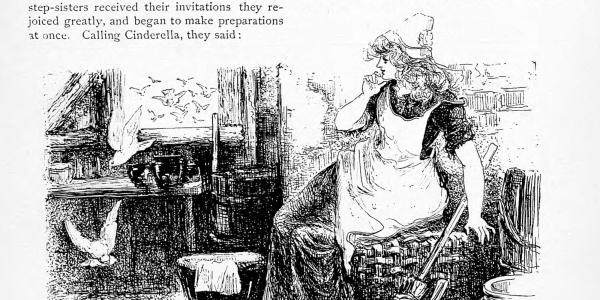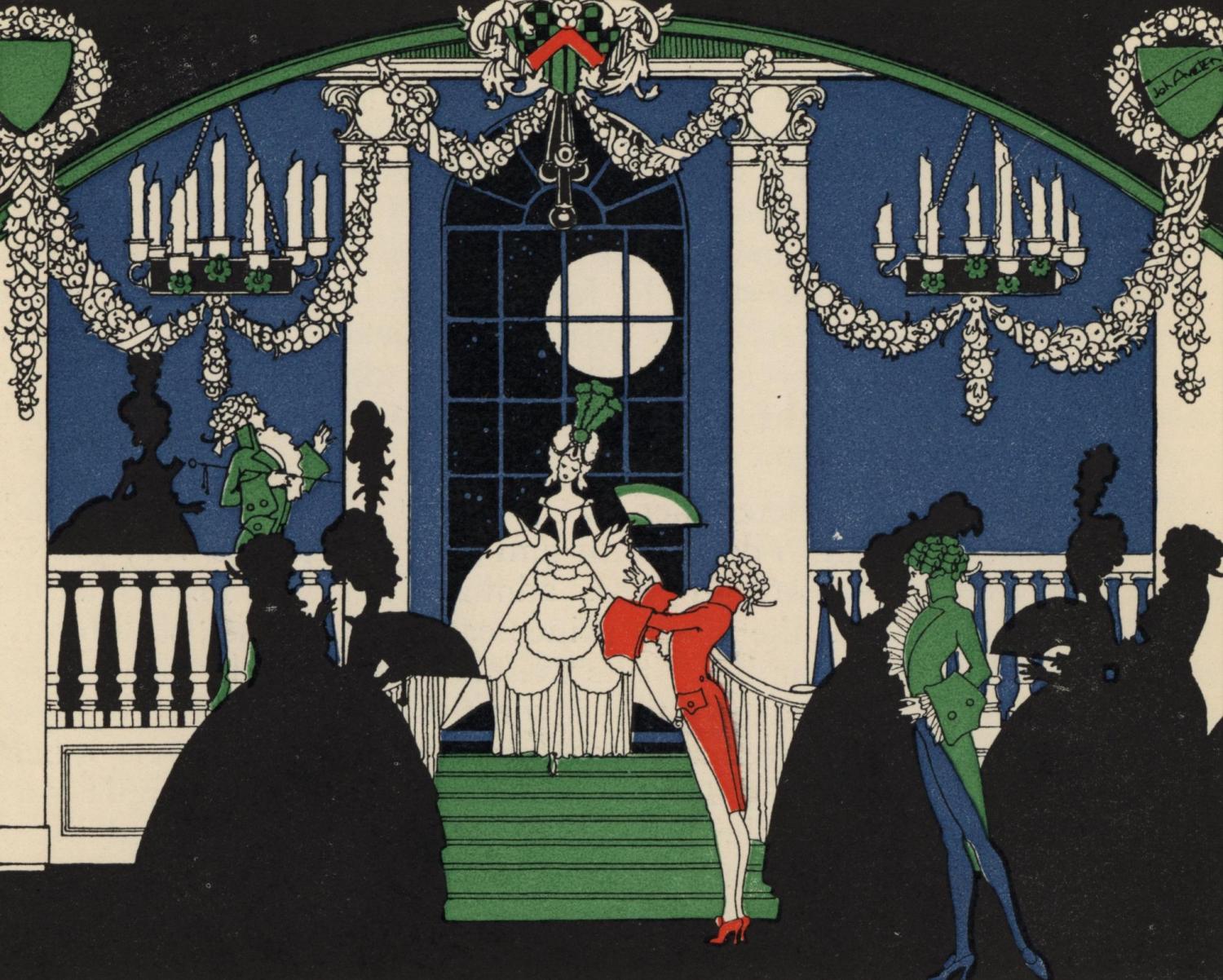Tale Summary
A gentleman takes a second wife, a haughty woman with two equally haughty daughters from a previous marriage. He has his own daughter from his first wife, who is equally as good and beautiful as her mother. This daughter is called “Cinderella,” and is made to do menial tasks around the house by her stepmother and stepsisters because they could not bear her good qualities. When the girls are invited to a ball put on by the king’s son, Cinderella is made to tailor their outfits and does so well despite being jeered at by them. They spend all their time in front of the mirror, and do not eat, so to look more slender. When they leave, she bursts out into tears, and her godmother (a fairy) tells her that she will make it so she can also attend. She instructs her to fetch a “pompion” from the garden, which she turns into a fine coach, six live mice from a trap, which she turns into beautiful horses, a rat, which she turns into a coachman, and six lizards, which she turns into footmen. The fairy godmother then also transforms Cinderella’s rags into a beautiful gown and gives her the prettiest glass slippers in the world. She sends her on her way, but not before warning her to leave the ball before the clock strikes twelve. Cinderella is marveled at by all for her beauty, and the prince takes a liking to her, but she leaves at 11:45. When her stepsisters return home, they tell of a beautiful princess. The next night, Cinderella is even more finely dressed than before, and spends the whole ball with the prince, who is so sweet with his words to her that she forgets to leave before midnight. When she sees the time, she rushes away, leaving behind one of her glass slippers. As before, the two sisters returned from the ball and told of the princess, and that she left in a hurry. The next day, the prince ventures around with the glass slipper to find its owner, and after the two stepsisters fail to fit it, Cinderella fits it perfectly, and presents its twin. The stepsisters throw themselves at her feet and beg for forgiveness. Cinderella is as good as she is beautiful, so she gives them a pardon, as well as lodging at her castle and the hands of two lords after she marries the prince.
Fairy Tale Title
Cinderella; Or the Little Glass Slipper
Fairy Tale Author(s)/Editor(s)
Charles Perrault
Fairy Tale Illustrator(s)
John Austen
Common Tale Type
Cinderella
Tale Classification
ATU 510A
Page Range of Tale
pp. 37-44
Full Citation of Tale
“Cinderella; Or the Little Glass Slipper.” Tales of Past Times Written for Children, Charles Perrault, illustrated by John Austen, New York: E.P Dutton and Co., 1923, pp. 37-44.
Original Source of the Tale
Charles Perrault
Tale Notes
The opening places an emphasis on the ways in which both Cinderella and her stepsisters are exactly like their mothers. The ending stresses her virtue in not only forgiving her stepsisters but improving the conditions of their lives, unlike in other versions of the tale, where they are punished for their behavior.
Research and Curation
Kaeli Waggener, 2022
Book Title
Tales of Past Times Written for Children
Book Author/Editor(s)
Charles Perrault
Illustrator(s)
John Austen
Publisher
E.P Dutton and Co.
Date Published
1923
Decade Published
1920-1929
Publisher City
New York
Publisher Country
United States
Language
English
Rights
Public Domain
Digital Copy
Available at the CU Digital Library
Book Notes















